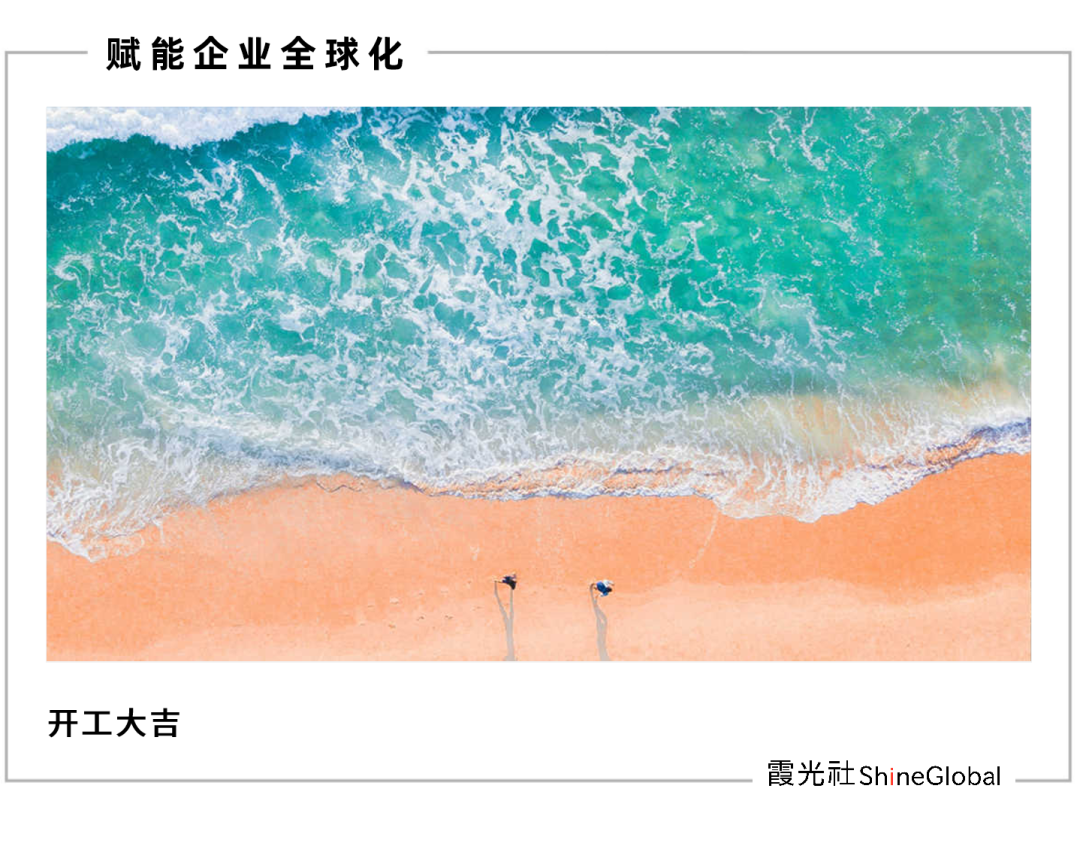Key Events Shaping Global Expansion Strategies in 2025
![]() 02/06 2025
02/06 2025
![]() 476
476

The Spring Festival holiday swiftly passed, but amidst the period of rest and recovery, the global business landscape buzzed with significant events and developments.
In North America, President Trump, upon re-entering the White House, officially announced additional tariffs on China upon taking office and simultaneously revoked the tax exemption for small goods from China. This move could significantly impact Chinese cross-border e-commerce giants like Temu, SHEIN, and AliExpress. Additionally, Trump is advancing the establishment of a US sovereign wealth fund and hinted at potentially acquiring TikTok, adding further uncertainty to the app's future in the US.
Furthermore, the most notable technology news during the Spring Festival was the emergence of DeepSeek, which caused a stir and panic in Silicon Valley. This may signal that China's large AI models are transitioning from followers to innovators in the Valley, heralding a new era of development.
Emerging markets are also undergoing substantial changes. News emerged during the Spring Festival that Grab and GoTo, two Southeast Asian ride-hailing giants, were accelerating merger talks, which could reshape the region's ride-hailing competitive landscape. It is reported that both parties aim to finalize a merger agreement this year, ending years of losses in the fiercely competitive Southeast Asian internet market.
On the first day back at work, Xia Guang She compiled a list of the top events in the global business arena during the Spring Festival for those venturing into international markets. May all global enterprises bravely navigate the winds and waves in the new year.

On February 1, Eastern Time, Trump signed an executive order, citing illegal immigration and fentanyl issues, to initiate the first round of a tariff war against China, Canada, and Mexico.
Specifically, the policy imposes an additional 10% tariff on goods imported from China, a 25% additional tariff on imports from Canada and Mexico, and a 10% tariff on energy resources from Canada. These tariffs were tentatively scheduled to take effect on February 4.
Following the executive order, the three countries swiftly retaliated.
China announced it would file a lawsuit with the WTO and take corresponding countermeasures to firmly defend its rights and interests. The Tariff Commission of China's State Council announced that, starting from February 10, 2025, an additional 10% or 15% tariff would be imposed on certain imported goods originating from the United States.
The ruling parties in Canada and Mexico both declared they would take tariff and non-tariff measures against the US to safeguard their national interests.
Meanwhile, Mexican President Sinemboum stated that his government does not seek confrontation with the US but rather cooperation and dialogue.
Perhaps due to initial negotiation successes, Trump signed an executive order on February 3 announcing the suspension of additional tariffs on goods from Mexico and Canada, postponing their implementation to March 4, 2025, but the additional tariffs on China will proceed as scheduled.
For enterprises expanding globally, the path to enter the US market via Mexico as a springboard will continue to narrow.
Trump's proposed tariff strategy not only targets illegal immigration and drug issues but also aims to exclude the "Chinese factor" from the US-Mexico-Canada Agreement (USMCA) industrial chain. To maintain trade with the US, Mexican President Sinemboum has made several commitments, with the six-year "Mexico Plan" being the most significant, focusing on revitalizing the country's manufacturing industry to replace Chinese imports, making his stance clear.
This means that regardless of whether the US tariff policy on Mexico is implemented, Chinese enterprises' progress in expanding globally in Mexico will face numerous obstacles. According to Xia Guang She, some Chinese enterprises in Mexico have already formulated layoff plans.
In addition to imposing a 10% tariff on China, Trump also revoked the "de minimis" tariff exemption for small goods valued at less than $800 in the executive order.
The US Customs and Border Protection (CBP) announced that, starting from February 4, 2025, these goods cannot be cleared through "low-value exemptions," and customs brokers/importers must submit formal or informal customs declarations and pay all applicable tariffs, taxes, and fees.
This implies that cross-border sellers like SHEIN and Temu will face challenges of significantly increased costs and further reduced order volumes. Xia Guang She learned that some cross-border sellers have received notifications from US buyers canceling orders due to "increased shipping costs and tariffs." This trend may intensify, leading to a reshuffle among small and medium-sized sellers.
However, compared to Canada and Mexico's dependence on the US market, China will not be overly disrupted by this tariff policy. In recent years, Chinese enterprises expanding globally have vigorously promoted diversified market layouts in the Middle East, Southeast Asia, Latin America, and other regions, gradually increasing their share of emerging markets to cope with the protracted Sino-US trade conflict.

In the US, the battle over TikTok persists.
On February 3, US time, President Donald Trump signed an executive order, taking the first step toward establishing a US sovereign wealth fund and implying that it may eventually acquire TikTok.

"We have enormous potential," Trump said on the day he signed the executive order. "I think in a short period of time, we will have one of the largest funds." The sovereign wealth fund will serve as an investment fund for the US, operating independently from the Federal Reserve and the Treasury Department. The fund requires congressional approval, including the source of funding for the potential fund.
US Treasury Secretary Scott Bessent stated that the sovereign wealth fund would be established within the next 12 months, and this plan "will monetize part of the assets on the US balance sheet for the American people."
Currently, over 100 countries/regions worldwide have sovereign wealth funds, with the Norwegian Government Pension Fund Global (GPFG) and China Investment Corporation (CIC) being the two largest in terms of asset size. Among the top ten sovereign wealth funds by asset size, six are from Middle Eastern countries, managing approximately $4 trillion in assets, an amount exceeding the GDP of the United Kingdom; by 2030, the total assets of Middle Eastern sovereign wealth funds are expected to reach $7.6 trillion.
When Trump first proposed the idea of a sovereign wealth fund during his campaign, he hinted that it could be funded through "tariffs and other smart things." He announced plans to impose tariffs on imports from the US's three largest trading partners - China, Mexico, and Canada. However, under the mediation of Mexico and Canada, the US tariffs on Canada and Mexico, scheduled to take effect on the morning of February 4, and Canada's retaliatory tariffs were both suspended for one month.
On the day he signed the executive order, Trump stated that this sovereign wealth fund could facilitate the acquisition of TikTok. However, Trump recently also mentioned that tech giant Microsoft is discussing acquiring TikTok, and he hopes to see a "bidding war" for the sale of the social media app. Other prominent figures in the tech industry, including Larry Ellison and Elon Musk, have also been listed as potential buyers.
Prior to this, on January 20, Trump's inauguration briefly brought respite to TikTok, which was forced to temporarily withdraw from the US market. On his first day in office, Trump signed an executive order delaying the TikTok ban, giving TikTok a 75-day buffer period. According to Trump's envisioned solution, the US would establish a joint venture with TikTok's current and/or new owners, with the US holding a 50% stake in the joint venture.
Regarding Trump's desire to nationalize TikTok, Peng Jiarong, an expert on the internationalization of Chinese enterprises, analyzed to Xia Guang She that if this move materializes, it not only signifies that the US government is strengthening its control over key technology enterprises and intervening in the market economy but may also mark a significant turning point in the Sino-US technology and investment game.
"For a long time, the US government has imposed various restrictions on TikTok under the pretext of data security and national security, but directly promoting nationalization would be an unprecedented approach. From an economic and legal perspective, such measures may face numerous challenges. First, as a market economy country, the US government directly taking over a private enterprise, especially one with foreign capital, may raise concerns about policy stability in the market, and such a precedent is not favorable to the US; second, because TikTok is a global company with operations worldwide, the US government's takeover may involve complex international legal issues and further concerns among foreign-invested enterprises about the investment environment in the US; additionally, this may exacerbate technological decoupling between China and the US, affecting the competitive landscape of the global digital economy."
Peng Jiarong believes that if the US government adopts such measures, it will send a strong signal that the government is willing to employ more radical means to control key technology enterprises. This will not only impact TikTok but may also profoundly affect any foreign enterprises operating in the US, not just Chinese enterprises.

On New Year's Eve, while toasting and exchanging cups, Chinese AI enterprise DeepSeek presented a promising New Year's gift to global Chinese - it simultaneously topped the free download charts on the Apple App Store in both China and the US, a first and unique achievement for a domestic app.
Subsequently, a series of discussions on AI revolution, plummeting US tech stock prices, and great power competition emerged surrounding this technological shift. A relatively unified view is that the launch of DeepSeek-R1 signifies that China's AI has transformed from a follower to an innovator, potentially threatening the dominant position of US AI enterprises.

The capital market responded most directly to this sentiment - NVIDIA, one of the US stock market kings, saw its market value shrink by nearly $590 billion, and the share prices of companies like Oracle and Dell were also impacted, instantly reducing the wealth of the world's 500 richest individuals by $108 billion.
Multiple countries' policy levels also reacted with alarm. The US response was particularly fierce, including but not limited to:
Several US government departments, including the US Congress, Navy, NASA, and Texas, have successively banned the use of DeepSeek on official government devices. The Chief Administrative Officer of the US House of Representatives issued a notice to all Congress offices requiring the prohibition or suspension of DeepSeek services and placing it on a strict review list;
"Hundreds" of companies (especially those related to the government) have blocked DeepSeek, such as cybersecurity company Armis, which stated that approximately 70% of its customers have requested to block access to DeepSeek;
Politicians were also active. Just two days later, on the 29th, Josh Hawley, the chairman of the Senate Intelligence Committee and a Republican senator, proposed the "2025 US AI Capabilities and Decoupling from China Act." The bill aims to prohibit downloading AI models from China, importing and exporting AI technology developed in China, and prohibiting US individuals or entities from conducting AI research or development within China. (The bill has not yet been passed)
Other Western countries also exhibited panic:
Italy directly announced a ban on DeepSeek-R1, and intelligent terminal app stores within Italy cannot download the DeepSeek APP;
The Australian government stated in a declaration that the Minister of the Interior has issued a mandatory directive to all government entities requiring "the prevention of the use or installation of DeepSeek products, applications, and network services, and the deletion of all existing DeepSeek products, applications, and network services from all Australian government systems and devices."
So, what technological breakthrough did DeepSeek achieve that caused global shockwaves?
First, while its performance is on par with OpenAI's O1 official version, its training cost is significantly lower. For comparison, according to The Information's estimates, OpenAI's costs are mainly divided into three categories: inference costs, training costs, and labor costs, totaling approximately $8.5 billion. In contrast, DeepSeek-V3 completed its training at a cost of only $5.576 million, less than 0.7% of the former.
This low-cost, high-performance model overturns the previous view held by many large model companies that "only a large amount of funding and computing power can develop good AI." This is also the direct reason for the decline in NVIDIA's share price: NVIDIA continuously launches more powerful and expensive chips to meet the demand for large model development.
However, industry insiders also pointed out that in 2024, computing power entered the era of over 10,000 cards, and DeepSeek's breakthrough is a manifestation of the arrival of a new technological inflection point - AI large models have transitioned from the language simulation stage to the reinforcement learning stage.
Secondly, from a technical standpoint, users of DeepSeek can intuitively appreciate its empathy capabilities. Unlike other chatbots, DeepSeek transparently showcases its Chain of Thought (CoT) prior to answering user queries. Previously, CoT was a closely guarded data asset among various AI companies. However, DeepSeek's open-source model has garnered the attention of developers worldwide, enabling them to build upon and innovate using its framework. This has fostered an open-source ecosystem, disrupted Silicon Valley's monopoly in AI, and diversified the competitive landscape of the global AI market.
OpenAI CEO Altman has acknowledged that OpenAI has historically stood on the wrong side regarding open-source weight models and research outcomes. He emphasized the need to develop different open-source strategies to compete with models like DeepSeek.
Following the release of DeepSeek, there have been speculations that its model is merely a refined version of advanced American models. It's worth noting that the R1 series of models are entirely trained using Reinforcement Learning (RL), which sets it apart from the prevalent RLHF (Reinforcement Learning from Human Feedback) approach in the industry. In the process of reinforcement learning, more emphasis is placed on the "correctness of the thinking process" than on "correct results".
Specifically, this is evident in the "aha" moments experienced during DeepSeek's operation. When solving problems, the DeepSeek model will pause, reassess, and optimize its approach. For instance, when tackling mathematical problems, the model might suddenly halt after providing a preliminary answer, indicating that it has found a better solution, such as outputting, "Wait, wait. That’s an aha moment I can flag here." This demonstrates the model's capacity to reflect on its problem-solving strategies and make improvements accordingly.
However, it's crucial to remember that even AI, like humans, is prone to errors. As technology begins to exhibit metacognitive abilities akin to humans, it becomes increasingly important to employ critical thinking to assess the authenticity of evidence and arguments provided by AI.

On February 4, local media reported that Southeast Asian ride-hailing giants Grab Holdings Ltd. and GoTo Group are accelerating their merger negotiations, aiming to finalize an agreement this year, marking an end to years of losses in the fiercely competitive Southeast Asian internet market.
Sources indicate that the merger negotiations have reached a crucial stage in recent weeks, with both companies believing that 2025 is an opportune time to conclude the deal.
Data reveals that Singapore-headquartered Grab operates in most parts of Southeast Asia, serving 187 million users across 8 countries and over 350 cities. Its services include ride-hailing, food delivery, hotel bookings, online banking, mobile payments, and insurance. On the other hand, GoTo Group, formed through the merger of Indonesian ride-hailing and payment company Gojek and e-commerce giant Tokopedia in May 2021, is Southeast Asia's largest private technology company, with a diverse portfolio encompassing online shopping, express delivery, ride-hailing, food delivery, and more.

The primary business segments under negotiation between the two parties revolve around ride-hailing, specifically Grab and Gojek.
In fact, Grab and Gojek have had prior discussions, but none have materialized into a deal. The earliest round took place on the eve of Gojek receiving a $550 million investment led by Warburg Pincus and KKR in 2016. Thriving Grab sent executives to discuss a merger with Gojek's management, but no agreement was reached. Subsequently, Gojek completed the $550 million financing. Prior to Gojek and Tokopedia merging to form GoTo and planning for its IPO, the two sides engaged in another round of discussions, which also did not come to fruition. Subsequently, GoTo went public on the Indonesian Stock Exchange with a valuation of $40 billion.
Observers attribute the obstacles to the merger over the past few years to differences between the two parties and potential antitrust issues stemming from their dominant positions in markets like Indonesia and Singapore.
While negotiations are still ongoing, a successful merger would undoubtedly have a significant impact on the market landscape.
For Chinese enterprises expanding abroad, the merger of Grab and GoTo could lead to increased investment in the Southeast Asian mobility market, fostering further market development and creating a more conducive environment for relevant Chinese companies to enter. Leveraging the outcomes of this market cultivation, China's big data, cloud services, mobile payments, and even automakers have the potential to collaborate, enhancing ride-hailing dispatch efficiency and travel experiences. Conversely, post-merger, market share will concentrate further, and ride-hailing companies like Didi may face intensified price wars, user competition, and market share compression in the Southeast Asian market.

According to data released by Japan's National Institute of Infectious Diseases on January 31, the cumulative number of influenza cases in Japan is estimated to have reached approximately 9.523 million from September 2, 2024, to January 26, 2025.
Amid the influenza outbreak, some hospitals and pharmacies in Japan have experienced shortages of anti-influenza medications. Japanese media reports indicate that while the overall supply of related medications exceeds demand, factors such as overstocking by certain medical institutions and pharmacies have led to uneven inventory distribution. Additionally, some Japanese pharmaceutical companies have suspended the supply of certain anti-influenza medications due to insufficient production capacity.

Data suggests that this flu season arrived approximately a month earlier than previous years, peaking in November 2024, with a surge in patient numbers since December. In the week ending December 15, there were 19.06 new patients per designated medical institution; by the week ending December 22, this number had risen to 42.66; and by the week ending December 29, the influenza epidemic had further spread.
Japanese experts estimate that the economic loss caused by the flu season in Japan amounts to approximately RMB 31 billion, encompassing the cost of treating influenza and the negative impact of sick leave on social production.
Experts advise Chinese enterprises operating in Japan to be vigilant about potential risks such as staff turnover, supply chain disruptions, and transportation issues. Simultaneously, enterprises have a responsibility to remind employees to monitor their and their family members' health daily and encourage those using public transportation to avoid peak hours. A reporter from China Media Group stationed in Japan reminds Chinese tourists visiting Japan that in the event of health issues, they can seek treatment at medical institutions that offer services in Chinese and other foreign languages and, if necessary, seek assistance from the Chinese Embassy or Consulate in Japan.





